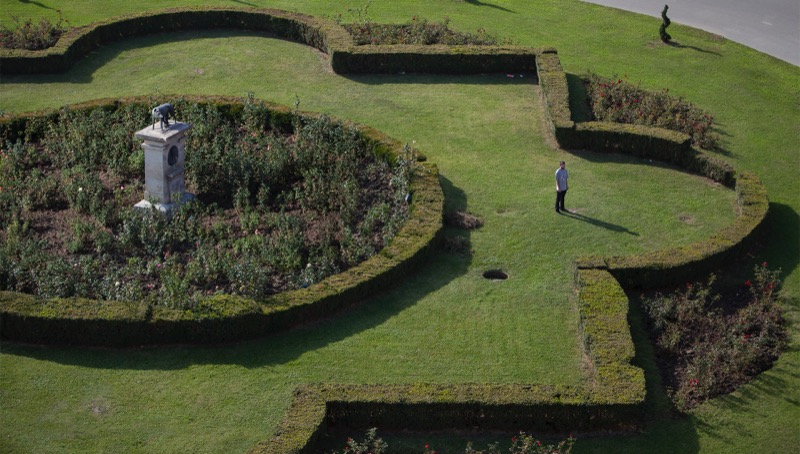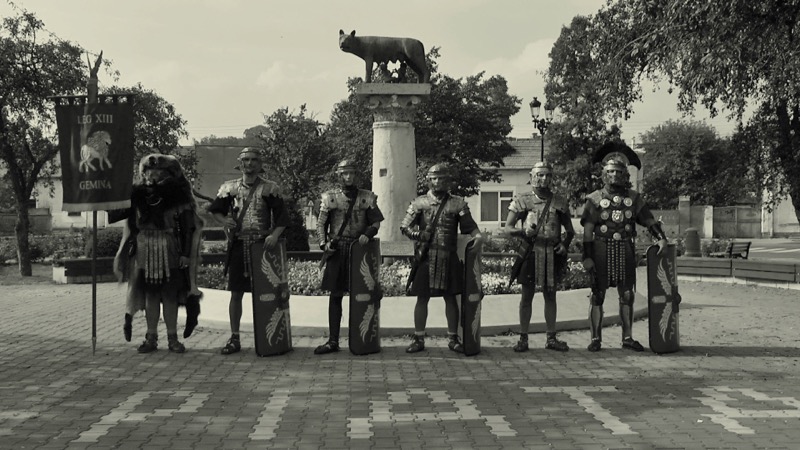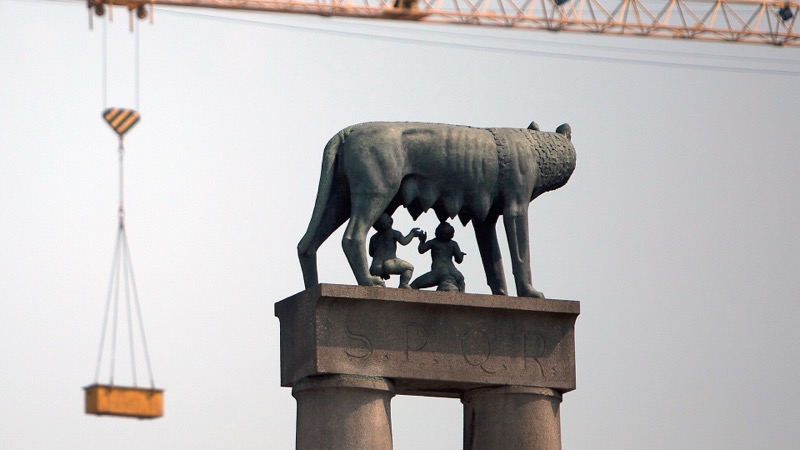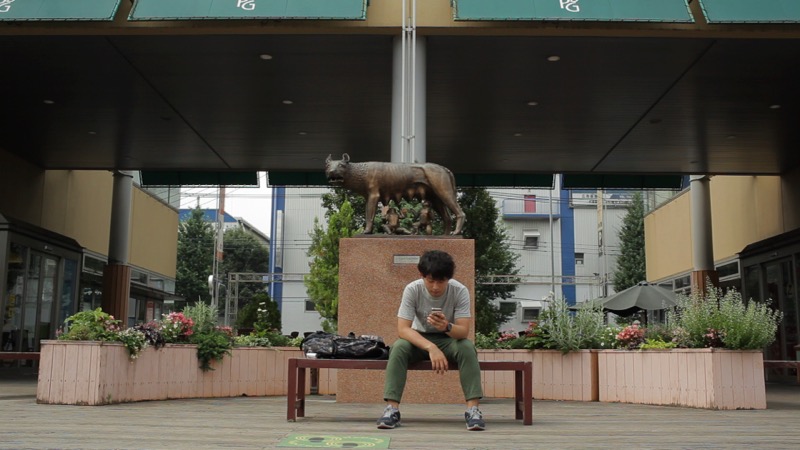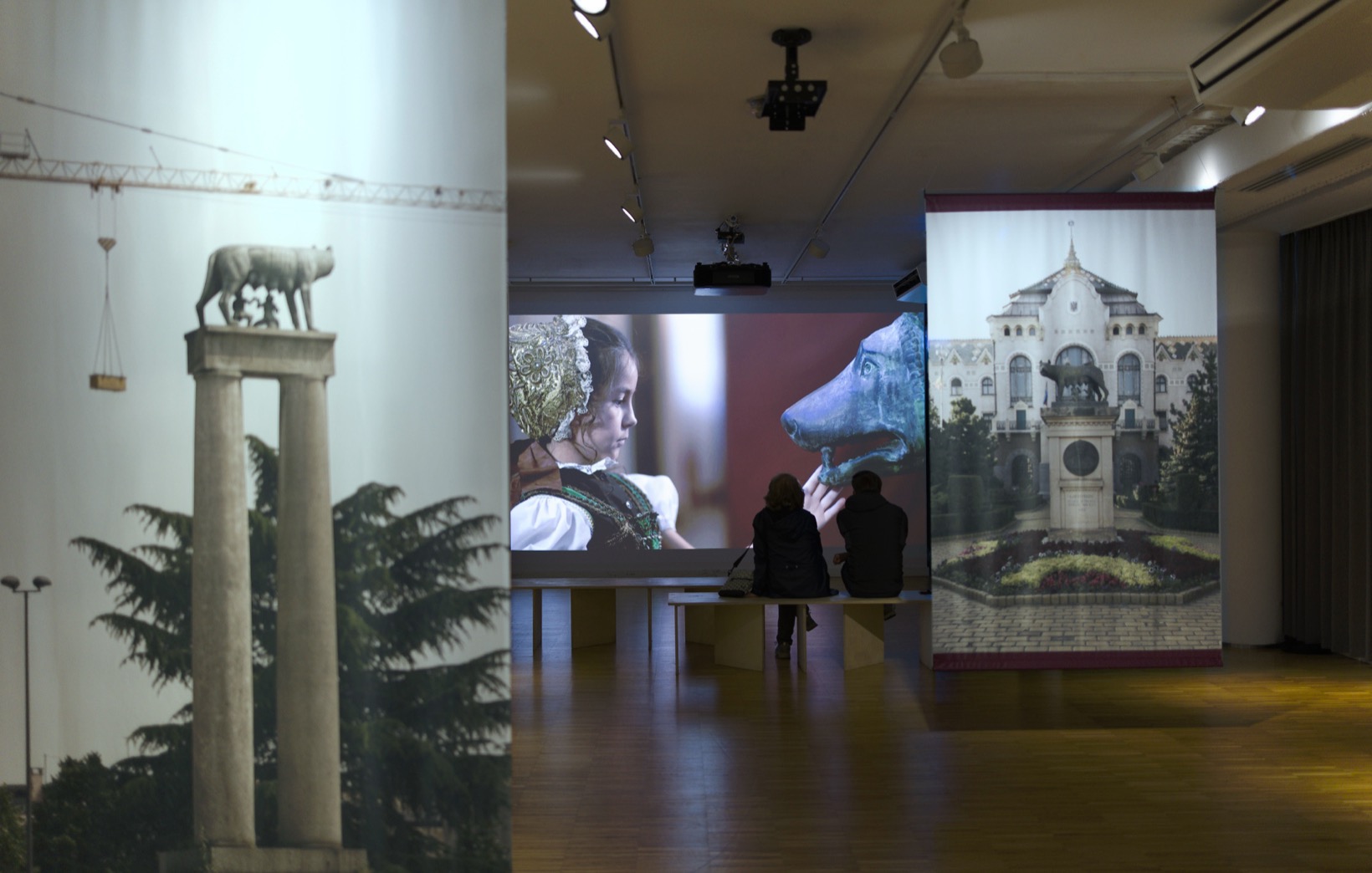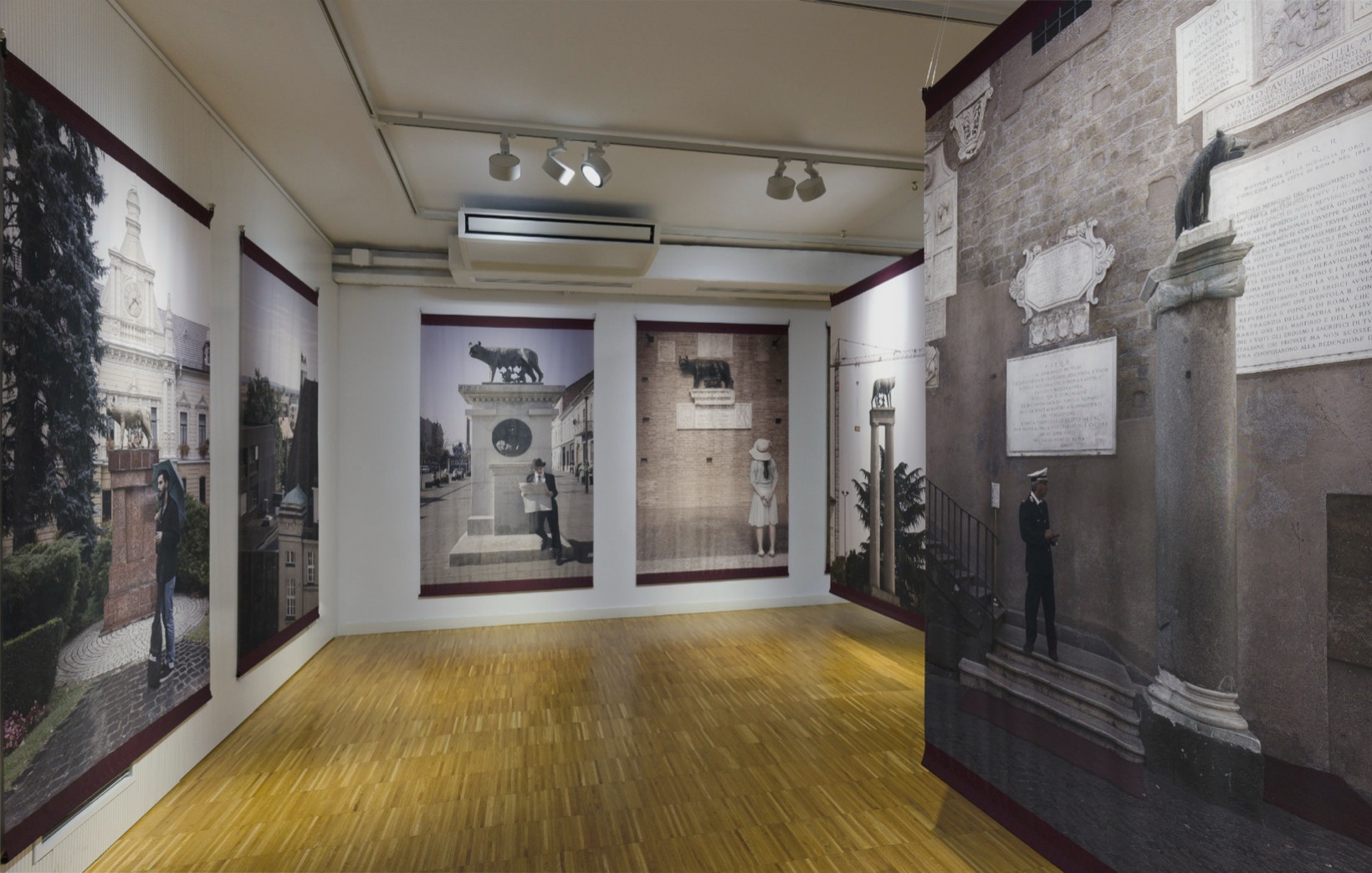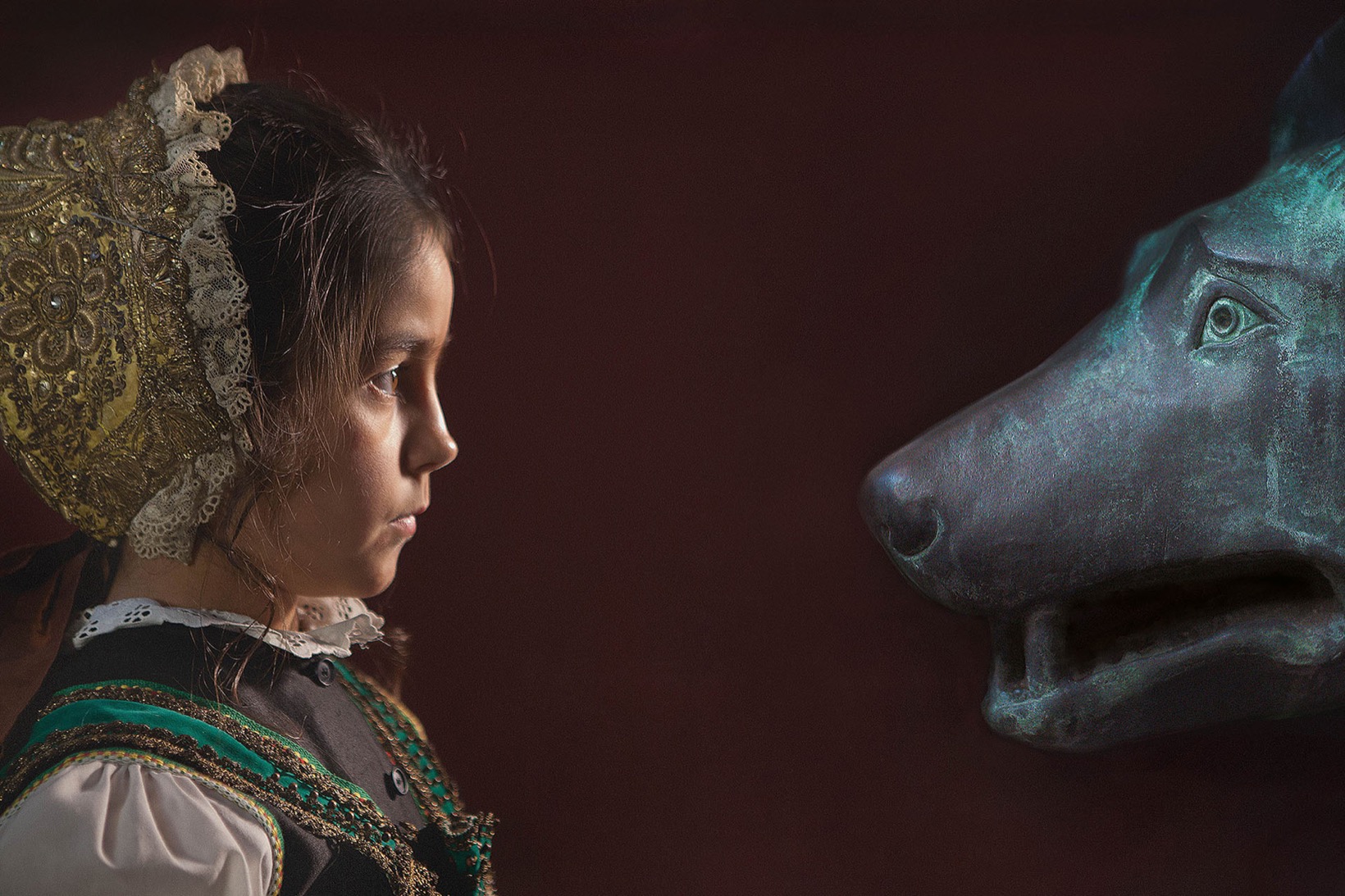
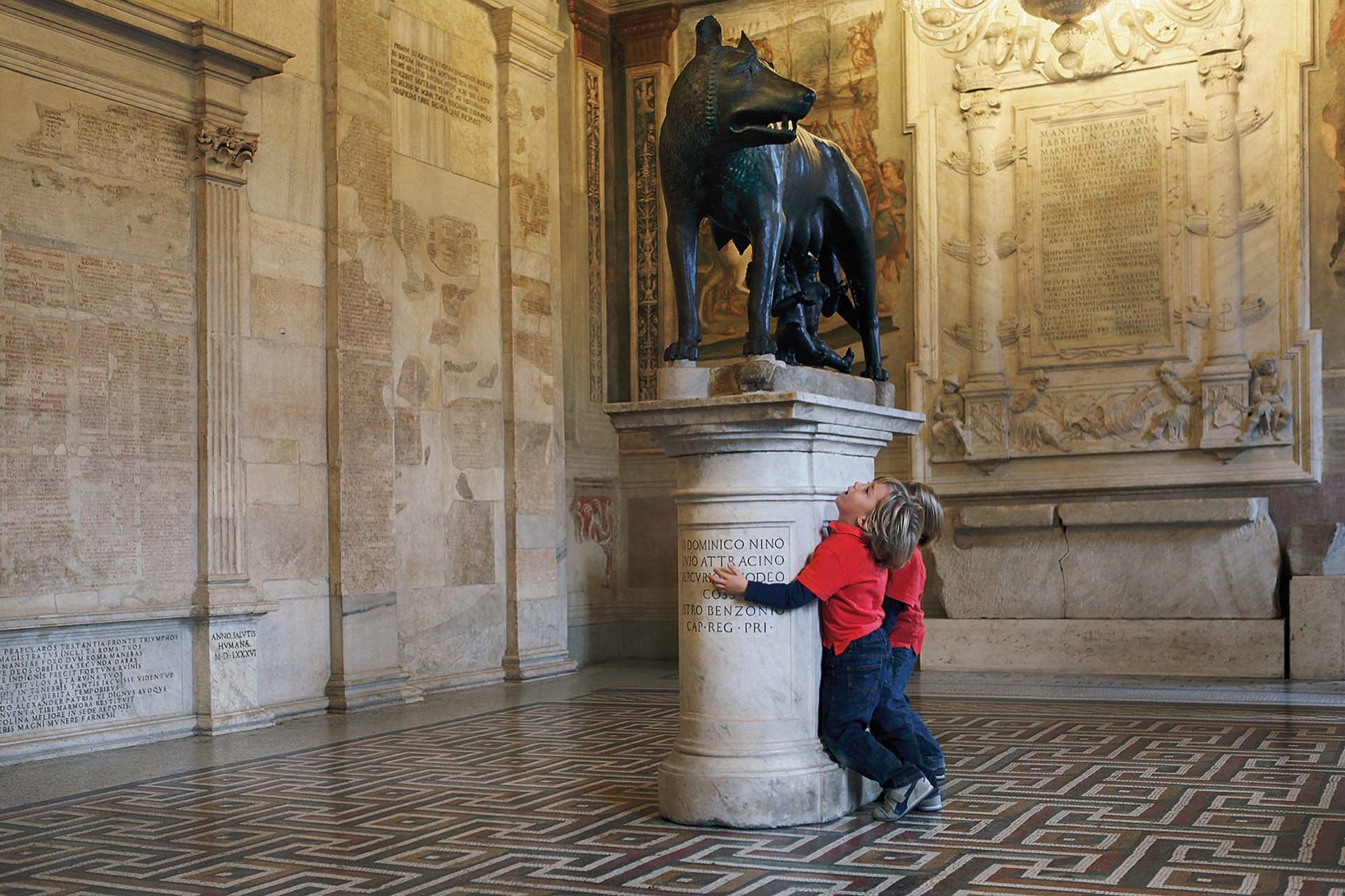

LUPA
Shortfilm, 2019, 18:48 min., Stereo, Color & B&W, HD 16x9
Art Research Project that consists of a series photographs in poster format and an artistic video film.
LUPA, is a cinematic experiment that allows an ancient masterpiece, the Lupa Capitolina, to tell its own story. A monument speaks. At the same time the film both constructs and deconstructs the monument.
The Trajectories of Identity and What Lies Beyond Them.
by MAGDA RADU
" (...). The meditation on cultural appropriation and the avatars of this mysterious mechanism that ricochet within globally ramifying constructs of identity form the subject of the artist’s most recent film, LUPA. The title refers to the famous Lupa Romana: a sculpture of Romulus and Remus being suckled by a she-wolf, a work that embodies the mythical foundation of Rome and, implicitly, Latinity. Drawing on painstaking historical and anthropological research, Aurelia Mihai traces the incredible spread of this symbol, the reproduction and erection of versions of it in various corners of the world, and also the types of significations attached to it in the contexts within which it is inserted. The film unfolds on multiple temporal and narrative planes: the historical research combines with a fictional register intended to lend representation to historic episodes that have shaped the development of this iconic symbol of identity: the animal that saves and nurtures the twins Romulus and Remus. The Lupa belongs to everybody and nobody; it is a copy without an original, whose capacity to endure and adapt leads it to embrace sometimes divergent, even contradictory meanings. It can be viewed as a symbol of the independence and emancipation of national states or, on the contrary, as an element of belonging to traditional alliances arising from the spread of fascism.
The film unfolds on multiple temporal and narrative planes: the historical research combines with a fictional register intended to lend representation to historic episodes that have shaped the development of this iconic symbol of identity: the animal that saves and nurtures the twins Romulus and Remus. The Lupa belongs to everybody and nobody; it is a copy without an original, whose capacity to endure and adapt leads it to embrace sometimes divergent, even contradictory meanings.
But Aurelia Mihai goes further than this: her impulse to archive and the accuracy of her historical research combine with an animistic interpretation of this cultural sign. Quite early on in the film we discover that the voiceover narrative which accompanies the foray into history is that of the she-wolf herself. She refuses to become a passive symbol, she narrates her own history, and, furthermore, she chooses to insert herself into the texture of the present in concrete ways.
One of the most interesting moments of the film, one in which the narrative flow is suspended, comes when we see a little boy who has lost his mother and is wandering through the galleries of the Capitoline Museums in Rome, where the earliest version of the she-wolf is kept (thought to be the original up until just a few years ago). The encounter between the venerable marble artefacts and the curious gaze of a child discovering the world is a sequence in which myth and reality intertwine. The camera lingers on the marble figures one by one, on figures from ancient myth that do not possess the global resonance of the Lupa. When the camera finally arrives in the room where the Lupa is kept, we see that there is not one boy, as we originally thought, but two, and that they are twins. We also realise that the Lupa is not just an object in a museum, but exerts a magical power over the present, continuing her story.
